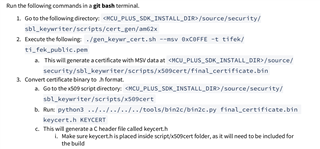Tool/software:
Hello,
We got the otp_keywriter_am62x-linux-installer.run and according to the README:
NOTE: This package has been validated with MCU PLUS SDK 09_00_00 version.
It is recommended to install this package with MCU PLUS SDK 09_00_00 version.
We are using the latest sdk, mcu_plus_sdk_am62x_10_00_00_14. Where I can get the latest otp_keywriter?
Regards,
John Tobias



